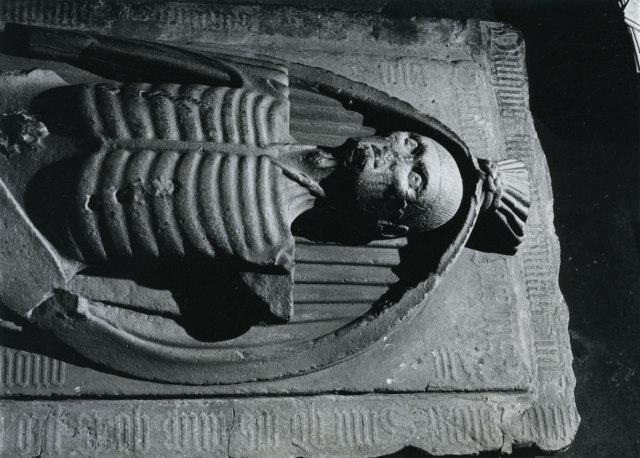In 1994, I read a book about the Camino by a friend of a friend and thought, "I'm going to do that some day."
I come from a line of very religious people, although I and my immediate family had abandoned all those beliefs by then. I had recently been a religion reporter at a newspaper, though, took the job seriously (no church suppers, more theology, doctrine and coverage of inter-faith stops and starts), and gained a lot from learning about various faiths. I was reporting in a predominantly Roman Catholic part of the country, with a very liberal bishop and an increasingly conservative hierarchy (recognizing that those labels can be superficial), and it was an interesting job.
Though I had gone through the "catechism" process that Methodists had established at my boyhood church, learning about Catholicism was the "Big Leagues".

But it was the "small-c" Catholicism that was lived by so many parishioners in that area (even the lapsed ones) that had the most profound effect on me. There was something innately "good" about it, without seeking attention or approval. Sticks with me.
In 2010, I suffered a serious illness that left me paralyzed for months, on a ventilator and feeding tube for two months, at one point unable to even blink to communicate simple 'yes' or 'no' answers. I think the common imagined response to that is to want to 'hurry up and get on with what you've been missing'. My reaction was the opposite: I wanted everything slowed down. More profound than 'stop and smell the roses'. More like some kind of desire to be the rose, if that makes any sense.
In 2011, still recovering, I hobbled through Paris and Rome. Paris first - the Louvre, d'Orsay, the Left Bank! Great trip. Rome was to be just more of a fun thing to do with an old college chum. What's the fascination with all these old churches, anyway?
As anyone that's been there knows, the 'old churches' are... beyond powerful. Caravaggio, Bernini, Michelangelo; the relics and the indulgences; the frescoes that explain it all, reading and writing skills not required; the stone country churches and the local saints. Incredible. (Shout out to Saint Fina of San Gimignano!)
But by far the biggest impact of that Italy trip was a couple of days spent in a small walled city outside Siena, visiting with a couple my friend knew from the husband's work in the States. He spoke English well, his wife was an American expat, but the people I met through them did not speak English. I do not speak Italian.
On our first night in town, we went to one of those church suppers I disdained as a journalist with seemingly the entire community. Our English-speaking friend told of how an officious-seeming woman we were watching speak to the new, young priest had succeeded in convincing him to remove an old stone-walled basin (possibly large baptismal font) from the tiny courtyard in order to make room for another picnic table. Soon after, alarmed locals presented 15th-century drawings of the church - and the font - to the city fathers, who ordered its restoration, and the priest restored it. "Did they use the same stones?" I asked. "Some," my friend smiled.
After those couple of days, I split from my friend and ventured through other parts of Italy, interacting with no one who spoke English. Everyone I came across was eager to help me find my way and meet my needs. It may have been seeing a disabled man struggling with too much luggage, but I think it was more.
I don't know what all that means, but it is kind of my own mysterious religious parable. I knew that I wanted to get to small towns in other places and meet people from other lands. It counteracts some of the trends we see in the West today, where the fierce tribalism of the early Christian Old Testament is overtaking the more inclusive, tolerant and interconnected New Testament ideas.
Three years ago, my company gave up on my recovery (my doctors had given up some months before, but my company had gone the extra mile) and fired me. I was not able to return to full-time and my job really required it, and I was not as effective even during the reduced hours I was working.
I can walk with orthotics, but nerve damage everywhere has left me somewhat hobbled and weak. I have fatigue from the illness and some cognitive issues (from the drug treatment or the insufficient oxygen provided by the ventilator -- doctors say either could be the culprit). I stay active, but my legs get numb and I can freeze up physically after stopping to rest. I'm basically at the neuropathy level I see at my octogenarian parents' retirement community. To write this post, I had to look up what I would consider some pretty simple words, and you surely would not want me doing your taxes for you in the mid-afternoon, or, if I'm honest with myself, at all (this might be a US-only metaphor - our income tax laws and forms are ridiculously complicated).
I am not sure whether I will be able to complete this Camino. I feel bad about referring to "gear shopping" in another thread, and I do believe that is not in concert with the traditions, but I have to lug a CPAP and some back-up CPAP and orthotics parts, and I really do need to find lighter stuff and shoes that can withstand 800km and the relentless stress of the connection to the orthotic devices.
In a lot of ways, I am the "crowd" that has descended upon The Way rather than a "True Pilgrim", but I am looking forward to remaining slowed down and finding out what I find out. I expect that I will be immersed in the small-c Catholicism that underlies the faith. And True Pilgrims. And tourists.
Can't wait!
































